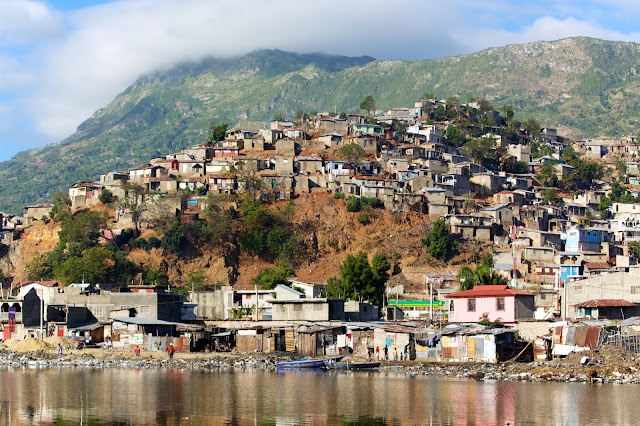The Citadel in Haiti
On one of my visits to Brooklyn, I went through Flatbush Avenue which has an estimated 200,000 people with Haitian ancestry. It is the largest Haitian community in New York, making it a highly visible community. If you ever went to Haiti, The Citadel is something you have to see since becoming an iconic piece of architecture in Haiti and has been printed on stamps, currency and numerous souvenirs. The Citadel is very large fortress located on the mountaintop in northern Haiti on top of Bonnet a L’Eveque mountain. UNESCO put it on its list in 1982 as a World Heritage Site since it is one of the largest fortresses in both South and North America.

Haiti's largest fortress is located on a mountaintop in the northern part of the country, Bonnet a L’Eveque mountain.
Henri Christophe, a well known key leader in the Haitian Revolution, which succeeded in gaining independence from France in 1804
The Citadel was built by Henri Christophe at the beginning of 19th century, and its purpose was to keep the French soldiers out. Henry was one of the key figures in Haitian slave rebellion, which brought independence to Haiti. He was sure that the French will try to take their freedom back again, so he organized 20,000 people to build this enormous structure. However, the attack never happened and the fortress was never used for its original purpose. Even today, 200 years later, piles of cannon balls lay around in pyramidal stacks ready for firing.
The Citadel takes up around 20 acres of land and its altitude is 900 meters. Some walls are up to 40 meters high with 365 cannons distributed along the walls.
The impressive fortress was designed to be an administrative capital and inside its walls, you will find a hospital, schools, a chapel, a printing shop, a distillery and garment factories! Built to last, it was meant to hold up to 5000 people for an entire year if the French attacked.
From the front, the fortress looks like a huge stone ship, taking different forms depending on where your vintage point is. Some angles were made in a way so they reflected cannonballs during the attack. Since the time it was built, it was repaired a couple of times but the original design never changed.
Haitian friends gather in Milot
When tourists come to Milot, they can hire self-appointed guides. The Milot rail is suitable only for experienced hikers but those who can’t climb on their own can rent a horse to take them up the steep, seven-mile paved stone trail.
A group of experienced hikers in Milot
Typical 4WD vehicle in Haiti
When visiting Milot, you will find that a lot of people live along the path, using the popularity of the fortress to sell souvenirs and refreshing drinks. The first part of the trail can be crossed on a 4WD vehicle but the last quarter must be completed on foot or on a horse. Almost the entire Citadel is accessible to tourists for exploration. The view from the rooftop is breathtaking and on a clear day, the Atlantic Ocean can be seen along with the city of Cap-Haitian.
Haiti as a country is not doing the best job of preserving this gem as part of their history, but many international organizations have stepped in to help. Due to the unstable political situation, many tourists avoid Haiti. However, this region is peaceful so there is no real hazard if you decide to visit.













No comments:
Post a Comment
Thanks for saying hello. But please, no spam.